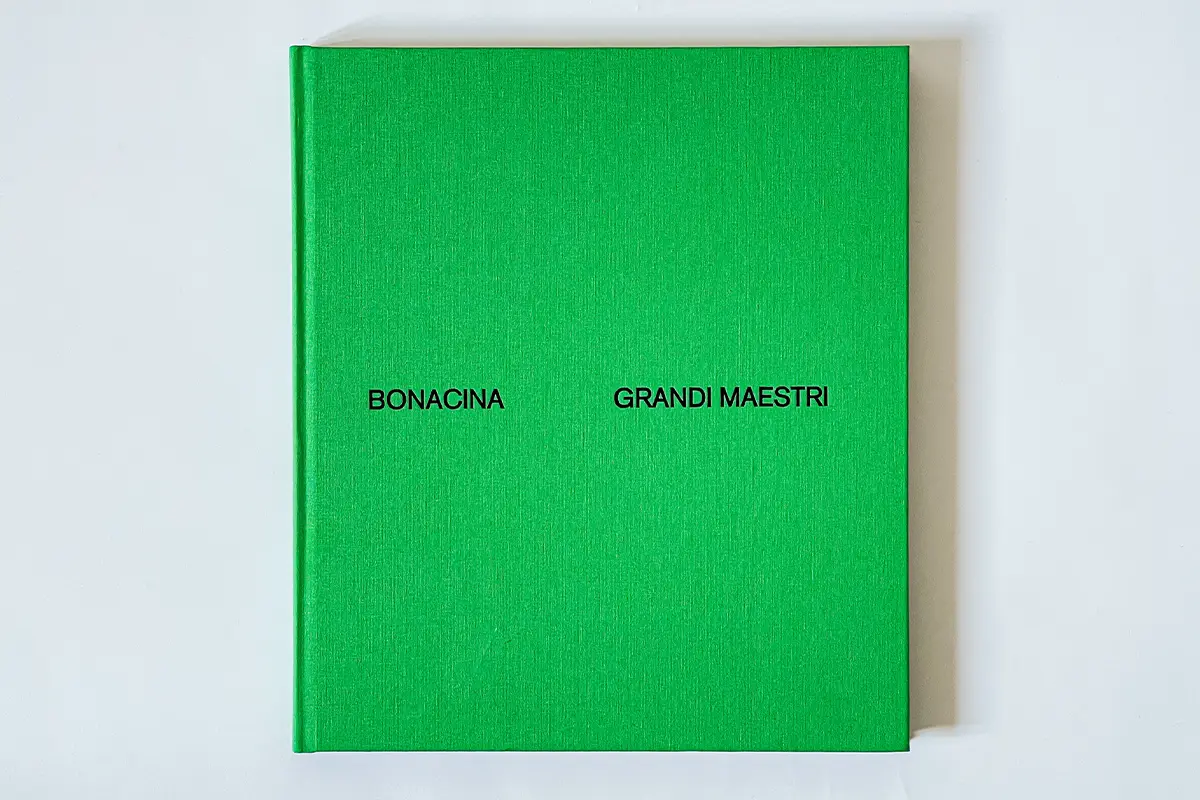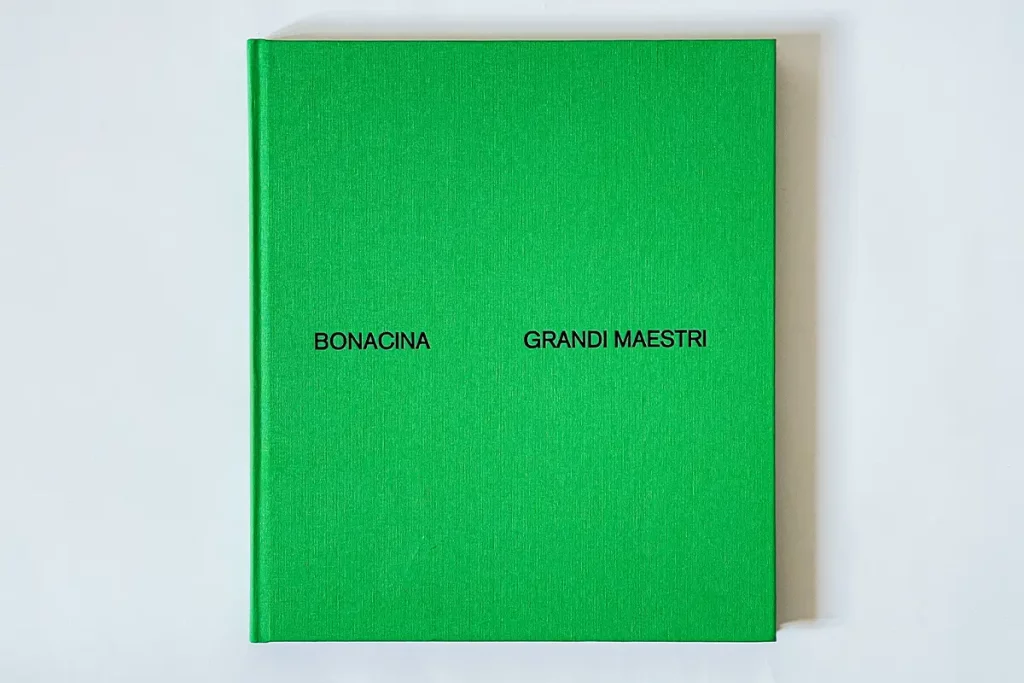Rattan manufacturing and design icons in the book Bonacina Grandi Maestri – pieces for the Agnelli family, Mondadori, Rothschilds, and inspirations for Mongiardino
Bonacina Grandi Maestri – a book tells the story of Bonacina 1889
Interpreting the ‘history of forms’ by going through those who produce them could give new readings – even to desacralize the idea of the genius who in full autonomy conceives objects and the productive world that puts itself at their disposal accordingly. Below is an interview by Gianni Biondillo with Elia Bonacina, an exponent of the fourth generation of the family, first given in Lampoon issue 19, November 2019.
More than hundred thirty years of history were begging to be recalled, collected and stopped in the pages of a book. Bonacina Grandi Maestri is the volume produced by Lampoon and published in 2022.
Gianni Biondillo interviews Elia Bonacina for Lampoon Issue 19
The history of design should be rewritten backwards. Nothing against the creativity of the individual designer, but perhaps telling the story of shapes through its producers might lead to interesting outcomes and interpretations — debunking the idea of the design genius working in complete isolation with the world of production waiting at their service.
If you look closely at the world of objects, designers come and go, while producers remain. Take Bonacina1889, for example. The name of the company tells us that this business has been around for more than a century. One hundred years to be exact, appearing long before Made in Italy became an international brand name, in itself perhaps due to a production sector that, decades earlier, had brought about the context, the milieu, it needed for its ascent to success.
I talk about this with Elia Bonacina, a member of the fourth generation, now at the helm of his family’s company. Not yet thirty years old, he confuses the myths about lazy young Italians. Between the two of us, I feel like I am the layabout.
Elia has a clear idea of what he wants and he speaks competently, but I can’t help but think the family tradition must be a heavy weight to bear.
The history of Bonacina 1889 is an epic that begins between Brianza and Indonesia-from here Giovanni Bonacina imported rattan
It’s a bit like standing on the shoulders of giants. It’s quite a bit to carry, he says, «but I enjoy it». The story of his family business is somewhat of an epic narration. «My great-grandfather Giovanni was born into a big family — he had ten siblings. At that time, everyone in Brianza farmed the land. He went by horse-drawn cart to study in Milan». Better than going by foot, I tell him. «It was a long journey from Lurago on the dirt roads — it could take a whole day».
A concept hard to imagine these days. «In Milan, he met some people from Holland importing a new material from Indonesia called rattan. Not bamboo, or even wicker. It was a palm, a solid wood that grew up to twenty meters in length, that could be curved and shaped». At the mention of Indonesia, my mind begins to wander. I see images of the East India Company, globetrotting travelers, jungle explorers, and tales by Jules Verne. Sci-fi, steampunk. «It was as if he had discovered carbon. The idea came to him: he could apply the expertise of Brianza’s wicker weavers to this new material. He had the mind of a businessman».
Bonacina 1889: collaborations with design masters and the manufacture of products between the industrial and the artistic
Typical of the Brianzoli. «Not only production but also scouting for new markets, exporting, expanding and building new factories. Don’t forget that he was only twenty-one when he founded this company». Today we’d label it a young start-up merging expertise with new materials, creating innovative technologies. From the very beginning, he sought a sophisticated market, creating furnishings for the nobility and the new urban business community. Success was immediate. Gold medals were won at international exhibitions and fairs in Rome, Paris and London.
«Meanwhile, one of his brothers, Pietro, was managing his company». Wasn’t one Bonacina enough? Elia laughs and says, «The second generation was that of Vittorio». World War II was over, and Vittorio was at the head of a solid company during an explosion of what would later come to be known as Made in Italy. In his own way, he was one of its creators. «Vittorio brought in young Italian designers from that period, some already famous, some just starting out, stimulating them to design with rattan, bark, and wicker». Their names have since become famous: Ponti, Albini, Aulenti, Zanuso and many others. The list of designers who have worked with you is long and yet, it’s as if there was only one «Bonacina style».
«It’s the material itself that creates this. Great designers collaborated with us because they could make shapes that would have been impossible or hugely expensive with other materials». There was basically no competition: it was either you or nothing. «Our distinguishing feature has always been that unique mix of industrial production and art. Because each of our articles is a unique piece, followed by a craftsman from start to finish». How long does it take to make one of your armchairs?
How long does it take to make one of your Bonacina chairs?
A Gala by Albini, let’s say. «At least five days of work. We are talking about an expert craftsman, already well trained». Who trains them? I think we have enough schools for designers, too many even, but don’t you think we are lacking schools for artisans? «You’re right, it’s what sets us apart. We need schools for artisans or we’ll get pushed out of the market. Young artisans in Brianza used to get their training by working alongside an experienced craftsman; today this is more difficult, and increasingly more effort is required. We have an in-company school, but this is really a problem that should be solved by the whole sector».
We can blame it on the fact that people today believe studying means not using your hands, that manual skills are a poor man’s destiny, without realizing there is what I call an «intelligence of the hands», which has always characterized Italian products.
«We still have the younger guys working alongside our older artisans, for at least five years. We need to stop being individualists: taking production secrets to the grave is wrong».
Palla by Tiovanni Travasa or Spring by Franca Helg
The products Vittorio had designed are now on display in design museums halfway around the world, like Margherita by Albini, for example. It still looks like it was made yesterday. «An armchair without legs, just imagine». It has inspired other products of yours, such as Palla by Tiovanni Travasa or Primavera by Franca Helg, and also, in other materials, like Up by Gaetano Pesce, produced by B&B Italia. «In my family, innovation is a consolidated way of doing things.
My father, Mario, springs to mind, a designer who studied in Florence. He took us in a new direction entrusted to designers such as Renzo Mongiardino or Gae Aulenti. It was no longer a question of producing standard pieces to sell around the world, but unique pieces to furnish the homes of the Agnelli, Mondadori, and Rothschild families.
Ethical luxury comes from purpose economy – the value of the material, the reed, without cultural appropriation
Mongiardino was inspired by the work of great-grandfather Giovanni, and he elaborated them to make exclusive bespoke pieces for the homes of these families.
The company opened a new market. This was the birth of the ‘decor’ catalog: decorative, classic, unfettered by excessive seriousness». The Mongiardino mood, I say. Filled with nostalgia for distant worlds, yet without being funeral. Using a material like rattan, the risk of being too oriental, too exotic, was always around the corner. «We managed to avoid this risk. It’s no coincidence that we’re the only European producers. All the others import from Asia. But the difference lies in the quality and the looks. We are the Ferrari of rattan».
Exaggeration, I say, smiling. But then, thinking about it, he’s probably right. The pieces they produce are icons that innovate over time, on their own. They are classics. «It was no coincidence that the Renaissance started in Italy», insists Elia. «We export 90% of our products all over the world and our biggest market is the USA». There are plenty of rattan manufacturers in America.
Elia smiles: «Americans at the top drive Italian, eat Italian, dress Italian, and sit Italian. 30% of our turnover is custom: big captains of industry, cultured and refined, but also the new tech industrialists or artists in Hollywood. Just think, we supplied the furnishings in the White House for Obama’s first mandate».
Brianza is the Silicon Valley of furniture and design – Ethical luxury
Elia knows how to take risks, just likes his predecessors, and now I understand how he’s come to manage such a sweeping legacy at the age of 27. «I set out on an arduous mission, buying up our cousins’ company». The one founded by Pietro, Giovanni’s brother.
«They were the first to produce for the outdoor sector, using stainless steel and woven synthetics. They had no heirs and I convinced them to merge the two businesses to create Bonacina 1889. Now the collections are all under the same roof, covering a 360-degree range. What I would like is a company museum».
Brianza, an ethical luxury – What is the secret of this district?
«We are the Silicon Valley of furniture and design. Here we grow up with the concept of business; it is as sacred as going to church for us. In the company, you understand just how powerful ideas are, how you go from a prototype to production, distribution and marketing. We are transformers. As children, we played in the company.
When you grow up, continuing the work done by your ancestors seems like the only right thing to do with your life. It’s true, we are hardworking, we are not clock watchers. But we are driven by passion». In fact you are like very few others in the world. Cassina comes to mind, as does B&B and many other manufacturers.
What’s the personal relationship between the company, professionals and clients?
«Work is also emancipation». In what sense? «Since 1889, our wives have worked in the company, too. Men and women have always worked side by side, in a fusion of vision and sensibility. Sometimes capable of being more business-minded than their husbands, as in the case of Carla, Vittorio’s wife, or my mother Antonia, who developed our foreign markets and the ‘decor’ collection». Is this perhaps the real secret of Made in Italy? I ask.
The personal relationship between the company, professionals and clients? «We’re a family», agrees Elia, «we are seeing the arrival of the third generation of employees — an integral part of the whole. We find time for a walk or a meal together. We respect our collaborators because Bonacina means all of us. My role model is still Adriano Olivetti. That should be the correct way of doing business».
Bonacina 1889
Bonacina 1889 was born in 2015 from the merger of the two companies Vittorio Bonacina and Pierantonio Bonacina. In 1889, in Lurago d’Erba, Giovanni and Pietro Bonacina
This text is an edit and a translation from the original article by Gianni Biondillo release in Italian on Lampoon 19, Fall 2019.




















